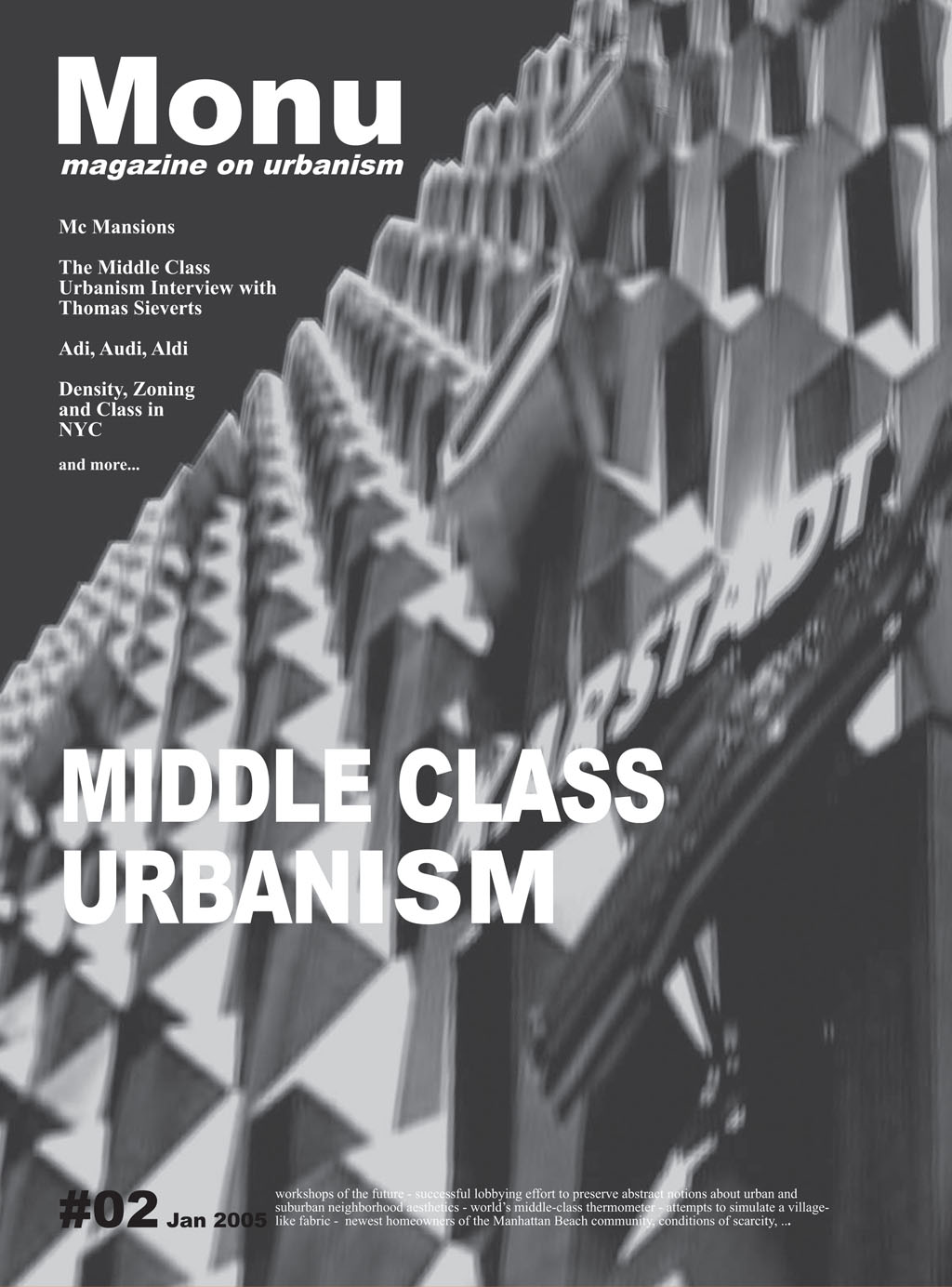20-01-05 // MONU #2 – MIDDLE CLASS URBANISM

(browse the entire issue #2 on Youtube)
Dispersion by Johannes Fiedler; Density, Zoning, and Class in New York City by Beth Lieberman; Mc Mansions by William Alatriste; Urbanism for the Middle Class in historic City Centers by Fernando Vegas and Camilla Mileto; Middle Class Urbanism Interview – with Thomas Sieverts by Bernd Upmeyer ; IKEA: When Cathedrals were blue by Manuel Shvartzberg; Neu Karow: a new space between berlin’s past and its border by Katherine Bourke and Gregor Harbusch; Landscape Urbanism by Detlev Ipsen and Holger Weichler; Circuitous by Leah Beeferman; Adi, Audi, Aldi by Theo Deutinger; Middle Class Emulations by Angie Waller; The New Middle Class by Robert Winkel; Middle Class Desires by UAS
For the last few decades the middle class has been the driving force behind urban innovation. More than any other, this urban group has both the financial resources and the sheer power of numbers to effectively transform desire into urban reality. Many of the most obvious components of our cities – Row houses, apartment buildings and sports facilities, to name but a few – are in large measure a function of the existence of a broad middle class. The middle class symbolizes modest urban values, values that seem hopelessly anti-utopian and run counter to the megalomaniac concepts of cities proposed by great architects like LeCorbusier or Hilbersheimer. But in reality the middle class is comprised of some of the boldest urban utopists ever, individuals who have been realizing their utopias for decades. Much less dogmatic and more successful than any imagined utopia, with their power, influence and sheer numbers the middle class has shaped the urban landscapes we inhabit today. And although the term middle class is very blurry it might be exactly the contradictory relation of middle class to cities that could lead to a definition of what is the middle-class. As Johannes Fiedler argues in his text “Dispersion”, in the absence of scarcity of some sort (e.g. economic, security) or top-down regulations, the default choice for living seem to be dispersed, low density environments. Or as Thomas Sieverts in our interview put it: “people seek the fringes”. It is almost a pioneer-like quality that parts of the middle class exhibit – the constant search for the new fringe, the new land. The relatively new phenomenon of exurbs is the US expression of that impulse. Places that are ever further removed from the population centers almost completely disconnected from any form of civic life. In Europe or Germany this strategy is not an option due to lack of available open space. Instead in Berlin, as documented in the article by Katherine Bourke and Gregor Harbusch, spaces in between old and new cities are the new frontier – the new fringe that the middle-class colonizes.
(Bernd Upmeyer, Thomas Söhl, Editors, January 2005)
Find out more about this issue on MONU’s website.